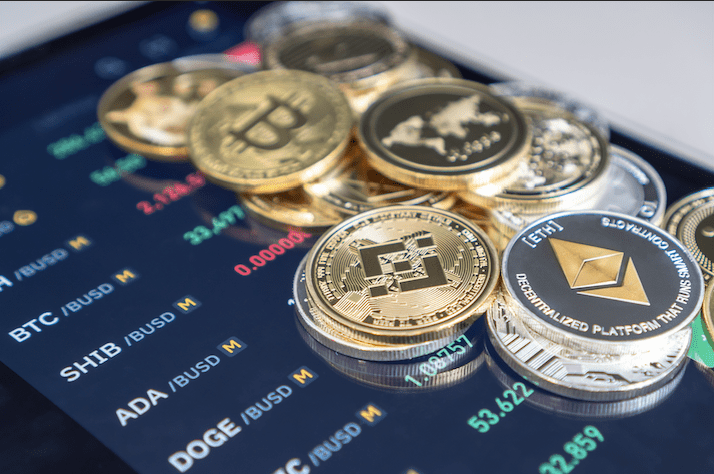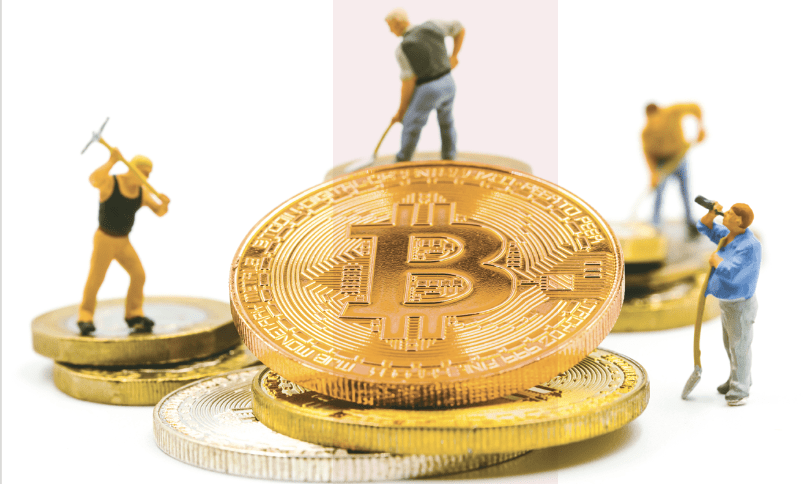The Power of the Blockchain
Technology safeguards cryptocurrency by creating an immutable ledger and banishing less-than-reliable humans from the equation
To understand the value of cryptocurrencies—or lack thereof—investors can begin by cultivating a working knowledge of the underlying technology: the blockchain.
Bitcoin, Ethereum and the other 19,000 or so versions of peer-to-peer money are simply components of blockchains. But blockchains can exist with no native cryptocurrency at all.
In its most basic form, a blockchain is simply a ledger—a shared, decentralized and immutable ledger that securely stores transactions.
Financial institutions use intricate ledgers to monitor and control the movement of funds. Withdraw $100 from an ATM, and the bank records the transaction and debits your balance. Large institutions are centralized, meaning a group of people takes responsibility for securing our finances.
What’s wrong here? Well, humans can be quite unreliable. The system works only because we trust people to safeguard our money. In other words, depositors count on bankers not to drain cash from savings accounts.
But the failure of numerous financial institutions in the 2008 crisis inspired Satoshi Nakamoto to invent Bitcoin. Unlike banks, Bitcoin doesn’t require trust. That’s because banks are centralized, and blockchains are decentralized.
In other words, every participant in the Bitcoin protocol gets a say on the state of the network. It will succeed if the majority wants it to keep operating, which is in their best interest.
Early iterations of the blockchain had a problem known as double-spending. Developers couldn’t prove cryptocurrency wasn’t spent twice. Like traditional banks, they were using a “trusted” third party to ensure that didn’t happen.
Then came Nakamoto’s white paper, which solved the problem by creating the world’s first truly decentralized blockchain network.
Here’s what he wrote: “We propose a solution to the double-spending problem using a peer-to-peer network. The network timestamps transactions by hashing them into an ongoing chain of hash-based proof-of-work, forming a record that cannot be changed without redoing the proof-of-work.”
Besides establishing a trust-free system for transactions, Bitcoin uses blockchain technology to ensure security through the SHA-256 algorithm.
Banks are often hacked, but that’s never happened to networks like Bitcoin and Ethereum. Once a transaction is placed in a “block” and that block is added to the blockchain, it becomes immutable—the equivalent of being set in stone.
So, let’s review a hypothetical bitcoin transaction to see how it works.
Bitcoin versus Ethereum
An understanding of a basic blockchain shows how a network like Bitcoin works. But Ethereum isn’t quite the same. The greatest difference between these two networks comes down to two words: executable code. Bitcoin’s programming language is “Turing incomplete,” meaning it can understand only simple orders, such as buy and send.
The Ethereum network uses a “Turing complete” language called Solidity. It’s used to write smart contracts, which is simply code executed on the Ethereum blockchain. Smart contracts provide the foundation for dApps (decentralized applications).
The contracts run on basic computer code. They’re somewhat like vending machines: Once a programmer provides a predetermined input (the insertion of cash), an output is produced (a bag of chips). No intermediary is required.
Bitcoin and Ethereum have a lot in common, but Ethereum seems to have the overall advantage.
More on DApps
dApps harness the power and security of a blockchain. It’s how Amazon (AMZN), Twitter (TWTR) and Meta (META), parent of Facebook, capture the power of the internet.
Blockchain is often referred to as Web3, or the third iteration of the internet. In this version, programs and applications aren’t stored on a server run by a central authority (like the companies above) but instead on a peer-to-peer decentralized network.
The monetarily ambitious can interact with dApps in finance. This growing segment of blockchain is called “DeFi,” short for decentralized finance. Let’s dig into DeFi next.
Introduction to DEFI
The brazen and burgeoning world of DeFi looks traditional centralized finance (CeFi) square in the eye and says, “Anything you can do, I can do better.”
Currently in its nascent stages, DeFi is a mirror image of the current financial system but offers numerous advantages. DeFi doesn’t require trust, provides high security and costs less per transaction (gas fees + protocol fees). It’s more democratic and more efficient.
dApps in DeFi enable any participant to partake in activities normally reserved for wealthy individuals and institutions. That includes staking, market making, lending or borrowing, and speculating with derivatives.
nfts
The acronym “NFT” stands for non-fungible token. Fungible simply means interchangeable. U.S. currency fits the definition because any $1 bill is as good as the next. Non-fungible means an asset is unique and cannot be interchanged. All paintings by Cezanne, for example, are not valued equally.
Think of NFTs as digital collectibles. Categories include digital art, sports clips, photographs, music, memes and trading cards. Most NFT transactions occur in a centralized marketplace called OpenSea.
Use cases
So, are people actually using blockchains? Yes! Aside from the consumers interacting with the aforementioned dApps, companies and governments are employing the power of the chain.
In 2022, De Beers launched Tracr, a blockchain-powered platform that tracks and manages the production of its diamonds. The technology traces gems to their source to assure customers they’re not buying “blood diamonds.”
Meanwhile, the Illinois Blockchain Initiative aims to use the power of the technology to secure the records of the state’s citizens, such as birth certificates, death certificates, Social Security numbers and passports.
Globally, about a third of all food is lost or wasted, but IBM has created the Food Trust blockchain to digitize supply chains, which helps reduce spoiling.
Ultimately, the uses for the blockchain may be restricted only by the limits of human imagination.
How Does A Blockchain Work?
1. Transaction requested
Dave wants to send some of his bitcoin to Mary. He attaches a transaction fee to the order to ensure his transaction is selected for validation. After that step is complete, Dave sends the order and it’s broadcast to the peer-to-peer bitcoin network.
2. Transaction enters a mempool
The first stop for Dave’s cryptocurrency transaction is a mempool, a database of pending transactions that acts as a waiting area. Miners (or sometimes “validators”) sift through the transactions in their mempool to make sure they’re valid. They include the transactions with the highest fees in a block to be validated.
3. Transaction enters a block for validation
After miners have placed their chosen transactions in a block, they validate them by using algorithms to solve a cryptographic puzzle. In Bitcoin, the technique is called proof of work (PoW).
4. Verification
After a block is validated, the transactions in it are broadcast to the entire network. Nodes in the network accept the block only if the transactions are valid and have not already been spent.
5. Block added to the chain
After all the transactions in a block are both validated and verified, the block is added to the blockchain. Once added, the transactions become immutable. They can never be altered.
6. Miners paid
Miners who solve the cryptographic puzzle are compensated in two ways. They receive the number of coins specified by the protocol and the fees participants attach to their transactions.
7. Bitcoin transaction is settled
Even though the block that Dave’s transaction was in has been added to the blockchain, he still needs to wait for a few more coins to be mined for confirmation. Once a few more blocks are added (typically six), the potential for double spending is eliminated, and Dave’s transfer of bitcoin to Mary is finalized.
Mike Martin serves as tastytrade head of content for digital assets.



















